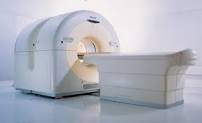
Diagnosed with Cancer? Your two greatest challenges are understanding cancer and understanding possible side effects from chemo and radiation. Knowledge is Power!
Learn about conventional, complementary, and integrative therapies.
Dealing with treatment side effects? Learn about evidence-based therapies to alleviate your symptoms.
Click the orange button to the right to learn more.
Most Effective Imaging and Cancer?

What is the most effective type of imaging and cancer? That depends on what you’re looking for. It depends on the type and stage of your cancer.
As is often the case, an article, study or research often exhibits a perspective. I consider it my job to figure out what that perspective is and if it rises to a point of bias that can harm cancer survivors.
If you are a newly diagnosed cancer patient, any type of cancer, any stage of cancer, you will undergo a host of diagnostic tests. From blood to urine to imaging. If your diagnostic testing is
- radiation-free
- non-invasive and
- covered by your health insurance
in my experience it is difficult to see any downside.
Imaging and Cancer Basics-
The choice of the most effective imaging study in medicine depends on the specific clinical scenario and the information needed. Different imaging modalities have distinct advantages and are used for various purposes. As of my last knowledge update in January 2022, here are some commonly used imaging modalities and their applications:
- Computed Tomography (CT):
- Advantages: High spatial resolution, excellent for visualizing bone and soft tissue, rapid imaging.
- Common Applications: Trauma assessment, pulmonary and abdominal imaging, detection of tumors, evaluation of vascular structures.
- Magnetic Resonance Imaging (MRI):
- Advantages: Excellent soft tissue contrast, multi-planar imaging, no ionizing radiation.
- Common Applications: Brain and spinal cord imaging, musculoskeletal imaging, abdominal and pelvic imaging, vascular imaging.
- X-ray:
- Advantages: Quick and widely available, relatively low cost.
- Common Applications: Chest imaging, skeletal imaging, some gastrointestinal studies.
- Ultrasound:
- Advantages: No ionizing radiation, real-time imaging, portable.
- Common Applications: Obstetric imaging, abdominal imaging, cardiac imaging, vascular imaging.
- Nuclear Medicine:
- Advantages: Functional imaging, assessment of metabolic activity.
- Common Applications: Bone scans, myocardial perfusion scans, thyroid imaging.
- Positron Emission Tomography (PET):
- Advantages: Functional imaging, assessment of metabolic activity.
- Common Applications: Oncology (detecting and staging tumors), assessing brain function.
The choice of which imaging modality to use depends on factors such as:
- the specific clinical question,
- the type of tissue being imaged,
- the need for functional information,
- patient factors,
- and the availability of the technology.
In some cases, a combination of imaging modalities may be used to provide a comprehensive evaluation. Keep in mind that advancements in imaging technology may have occurred since my last update in January 2022, so it’s always a good idea to consult with medical professionals for the latest information.
Have you been diagnosed with cancer? What type? What stage? To learn more about imaging and cancer
David.PeopleBeatingCancer@gmail.com
David Emerson
- Cancer Survivor
- Cancer Coach
- Director PeopleBeatingCancer
Imaging and cancer: A review
“Summary
Multiple biomedical imaging techniques are used in all phases of cancer management. Imaging forms an essential part of cancer clinical protocols and is able to furnish
- morphological,
- structural,
- metabolic and
- functional information.
Integration with other diagnostic tools such as in vitro tissue and fluids analysis assists in clinical decision‐making. Hybrid imaging techniques are able to supply complementary information for improved staging and therapy planning. Image guided and targeted minimally invasive therapy has the promise to improve outcome and reduce collateral effects.
Early detection of cancer through screening based on imaging is probably the major contributor to a reduction in mortality for certain cancers.
Targeted imaging of receptors, gene therapy expression and cancer stem cells are research activities that will translate into clinical use in the next decade. Technological developments will increase imaging speed to match that of physiological processes. Targeted imaging and therapeutic agents will be developed in tandem through close collaboration between academia and biotechnology, information technology and pharmaceutical industries…”
Cancer Imaging Program
Cancer may be difficult to detect, but for some types of cancer, the earlier it is detected, the better are the chances of treating it effectively. Imaging techniques — methods of producing pictures of the body — have become an important element of early detection for many cancers. But imaging is not simply used for detection. Imaging is also important for determining the stage (telling how advanced the cancer is) and the precise locations of cancer to aid in directing surgery and other cancer treatments, or to check if a cancer has returned.
Clinical trials, research studies involving people, play an essential role in determining whether emerging imaging techniques are effective and safe. For more information, see Cancer Imaging Clinical Trials.
RadiologyInfo
RadiologyInfo is designed to answer patient questions related to many radiologic procedures and therapies. It includes images from diagnostic radiology, interventional radiology and radiation therapy, has an alphabetical procedures list and galleries of images. There is access to descriptive material for radiologists to use in their waiting rooms.
Additional discussion of imaging instrument questions and utilities is available at the Medical Imaging web site supported by the National Association of Electrical Manufacturers (NEMA).
- Uses of imaging
- X-Ray imaging
- Computed Tomography (CT) scans
- Molecular and Nuclear Imaging (PET and SPECT)
- Radiation Risk
- Ultrasound
- Magnetic Resonance Imaging (MRI)
- Digital mammography
- Sentinel node mapping
- Image-guided surgery

